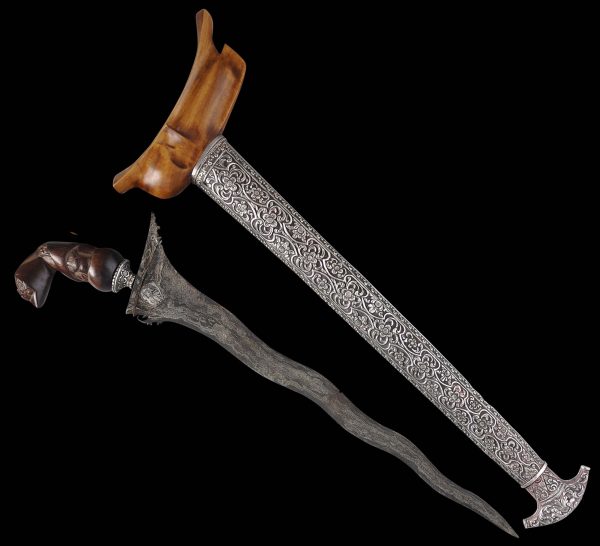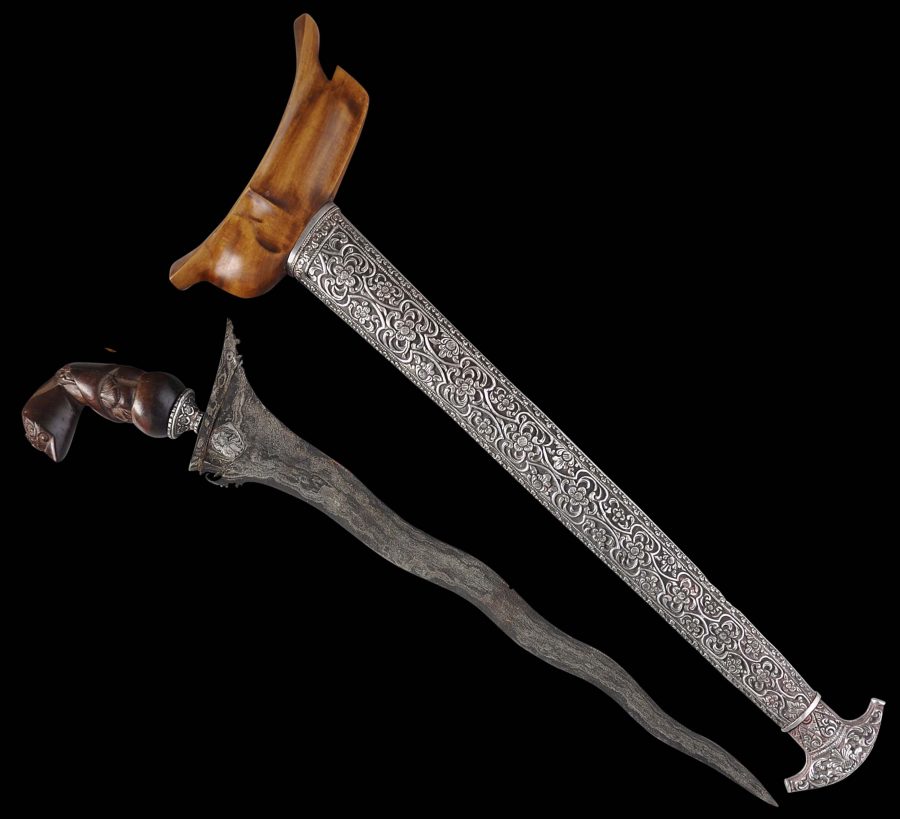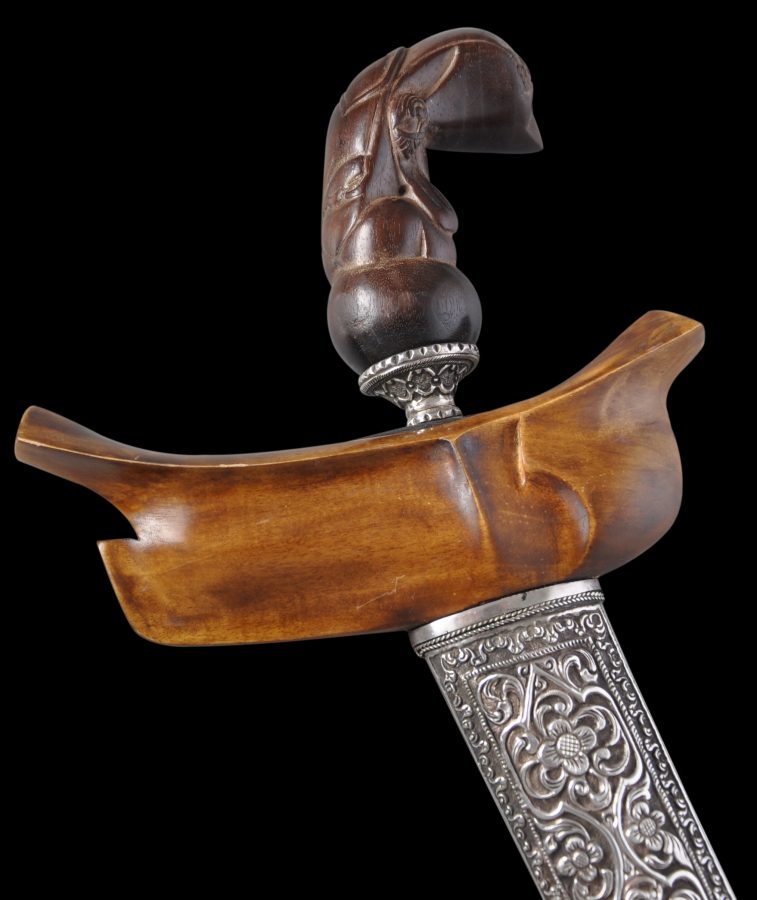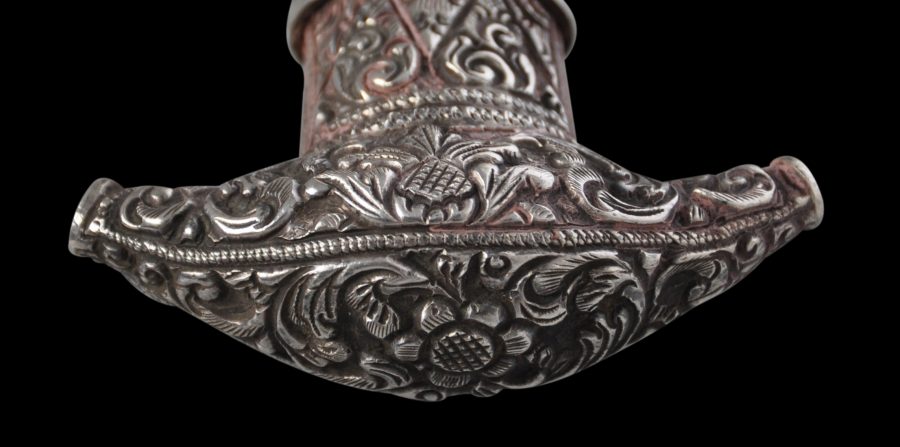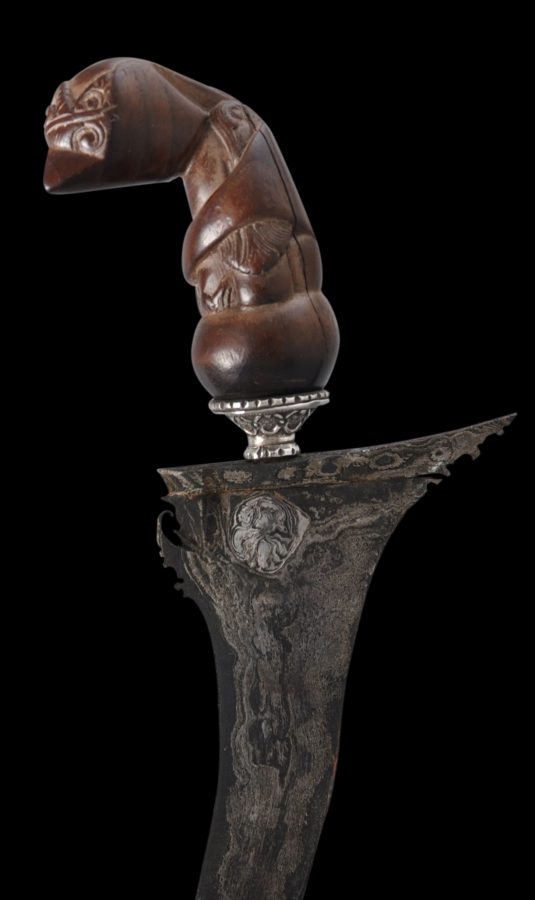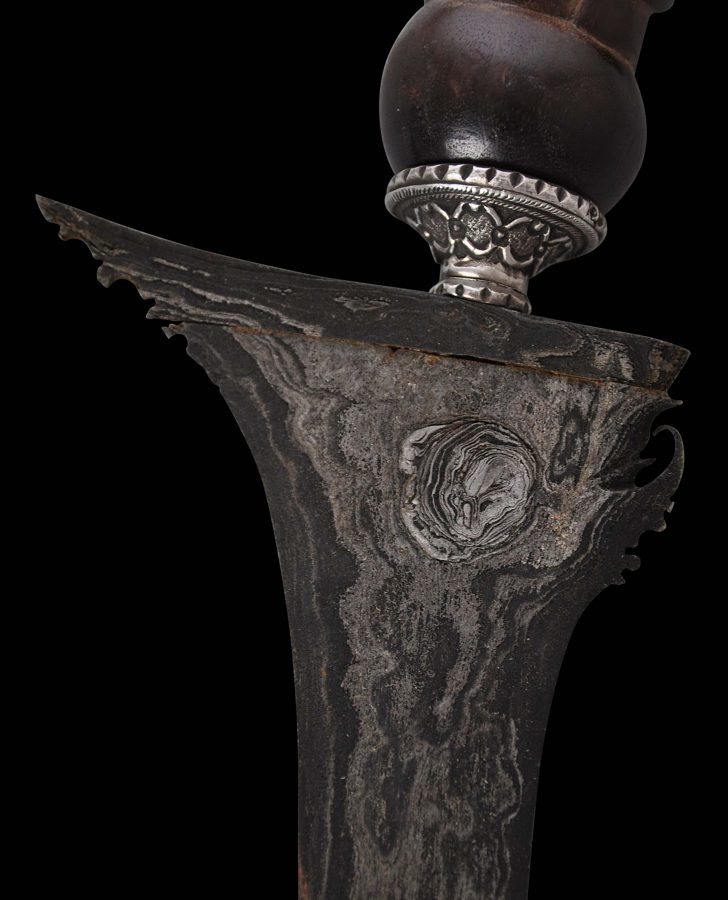This fine example of a kris was acquired in the UK and almost certainly has been in the UK since colonial times.
The hand-guard or wrangka is of darkened, blond wood and in the shape of a ship’s hull – quite possibly a European ship, as it clearly shows the ship’s rudder. This type of depiction is most typically associated with krises from Sumatra. Caravana (2010) identifies the shape precisely as that of the hull of a Portuguese nau sailing ship.
The collar or ring at the base of the hilt is of cast and chased silver.
The blade is double-edged and wavy with a pronounced pamour created by layers of nickel and iron. The top of the blade has on both sides what is often described as a ‘rose’ motif worked into the nickel and iron.
The scabbard’s pendok is encased in silver that has been very finely chased on both sides with typically Malay vegetal and floral scrolling arrayed in a lattice formation. There is some minor denting to the scabbard. The end of the scabbard terminates with a dramatically flared chape that is entirely cased with leafy scrolls and flowers.
The hilt is of carved wood and is shaped as a highly stylised Garuda. There is a thin, stable, age-related crack to the hilt on one side but this is barely noticeable.
The blade fits snugly into the scabbard. Overall, this is a fine kris in fine condition.
References
Caravana, J. et al, Rites of Power: Oriental Weapons: Collection of Jorge Caravana, Caleidoscopio, 2010.


